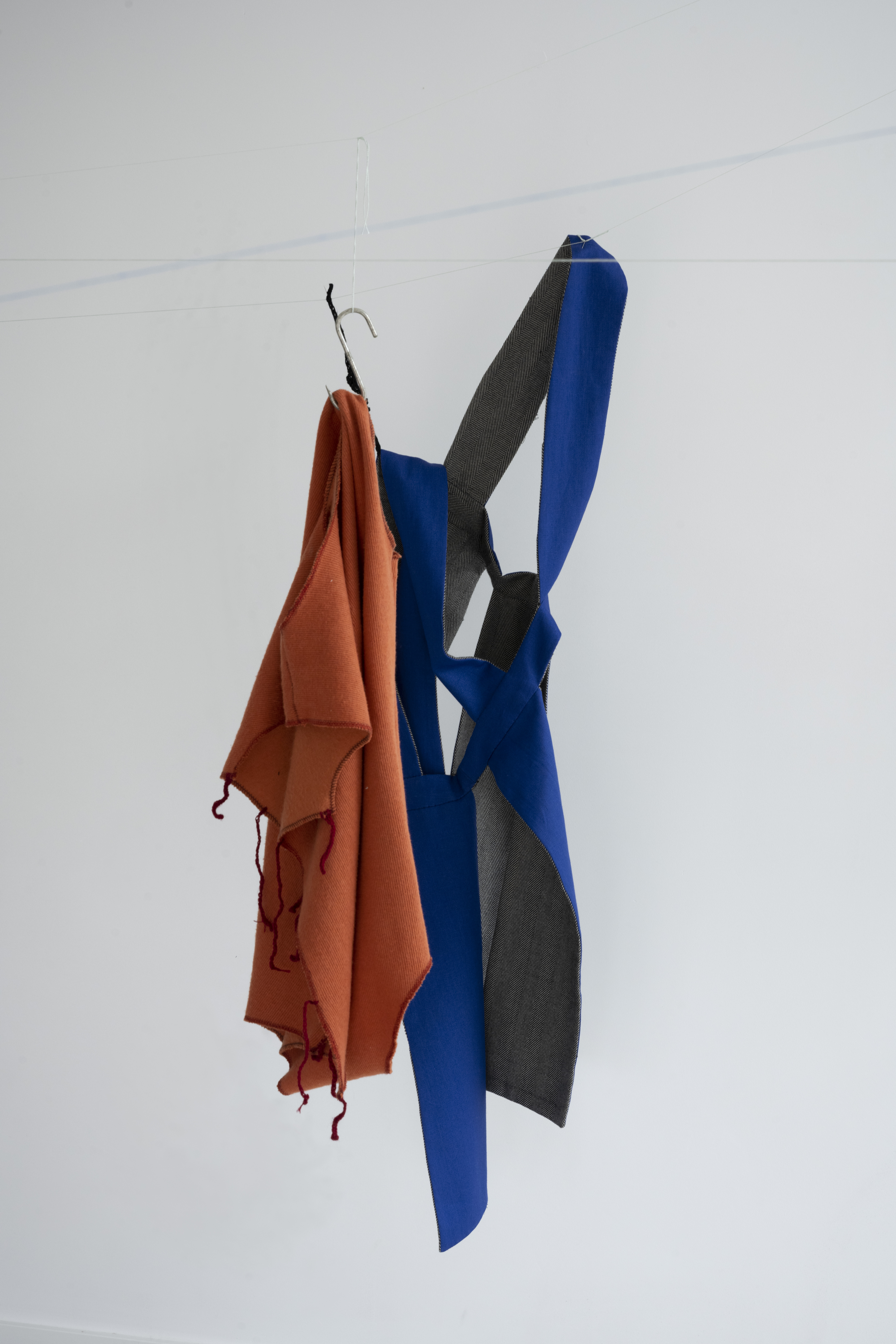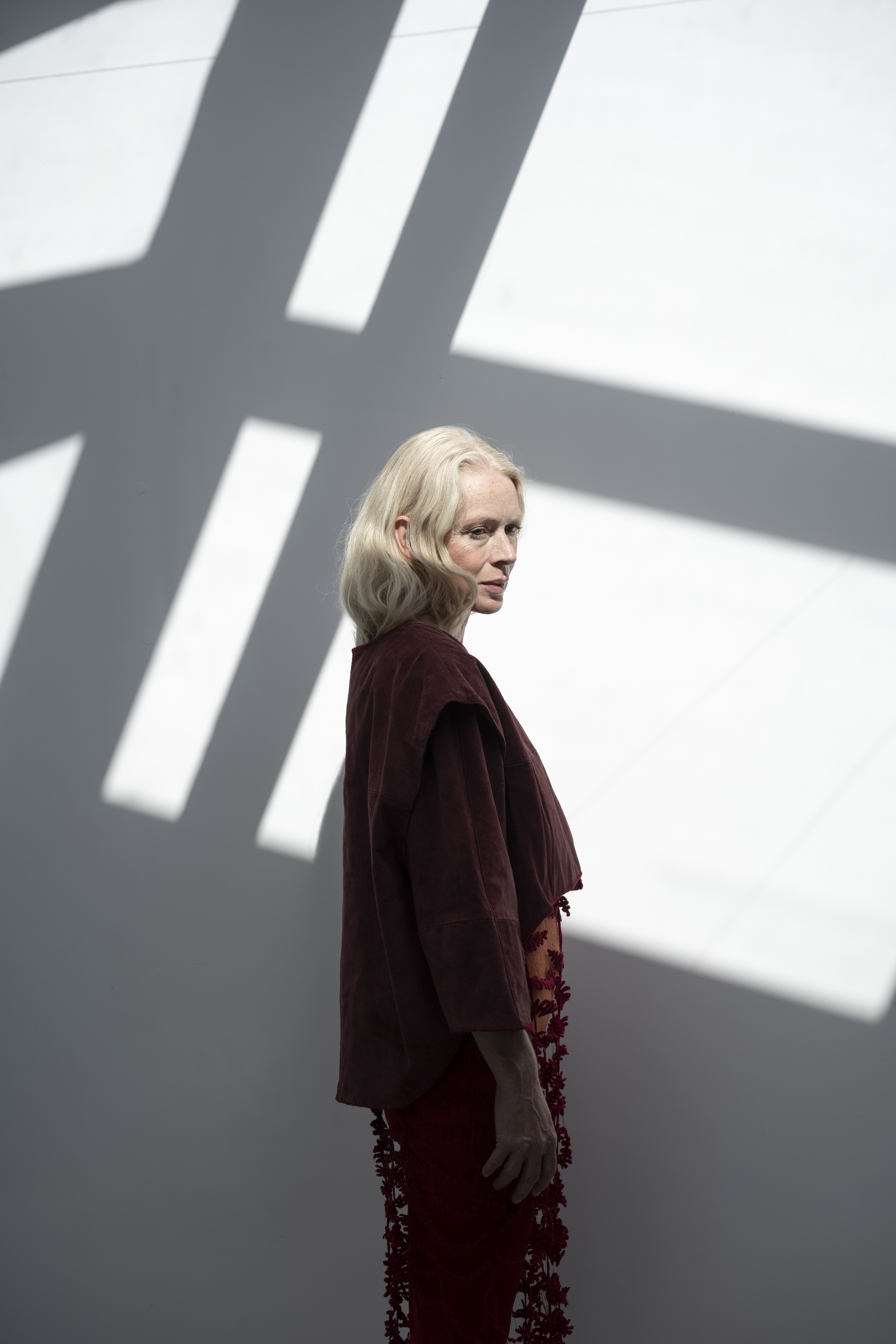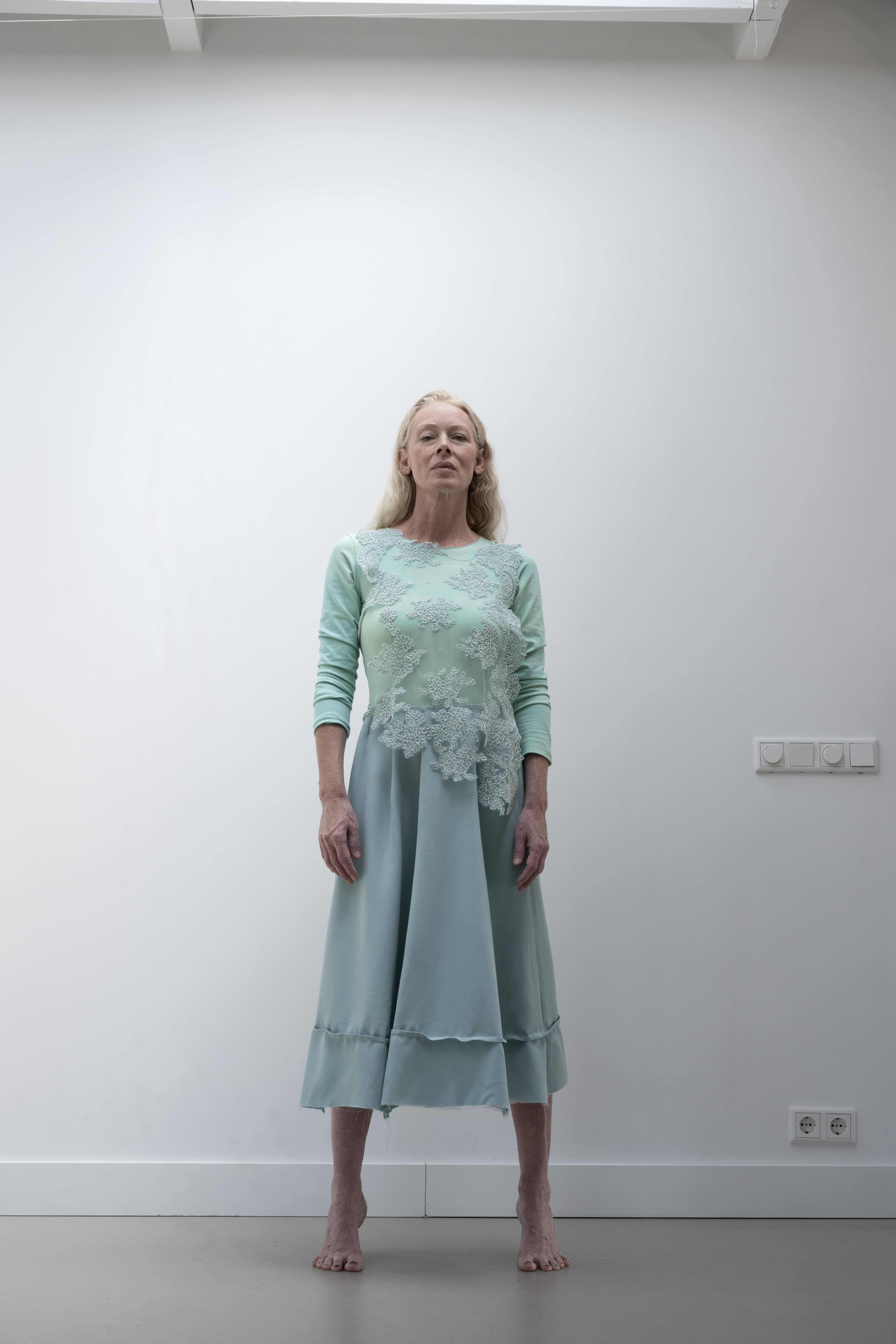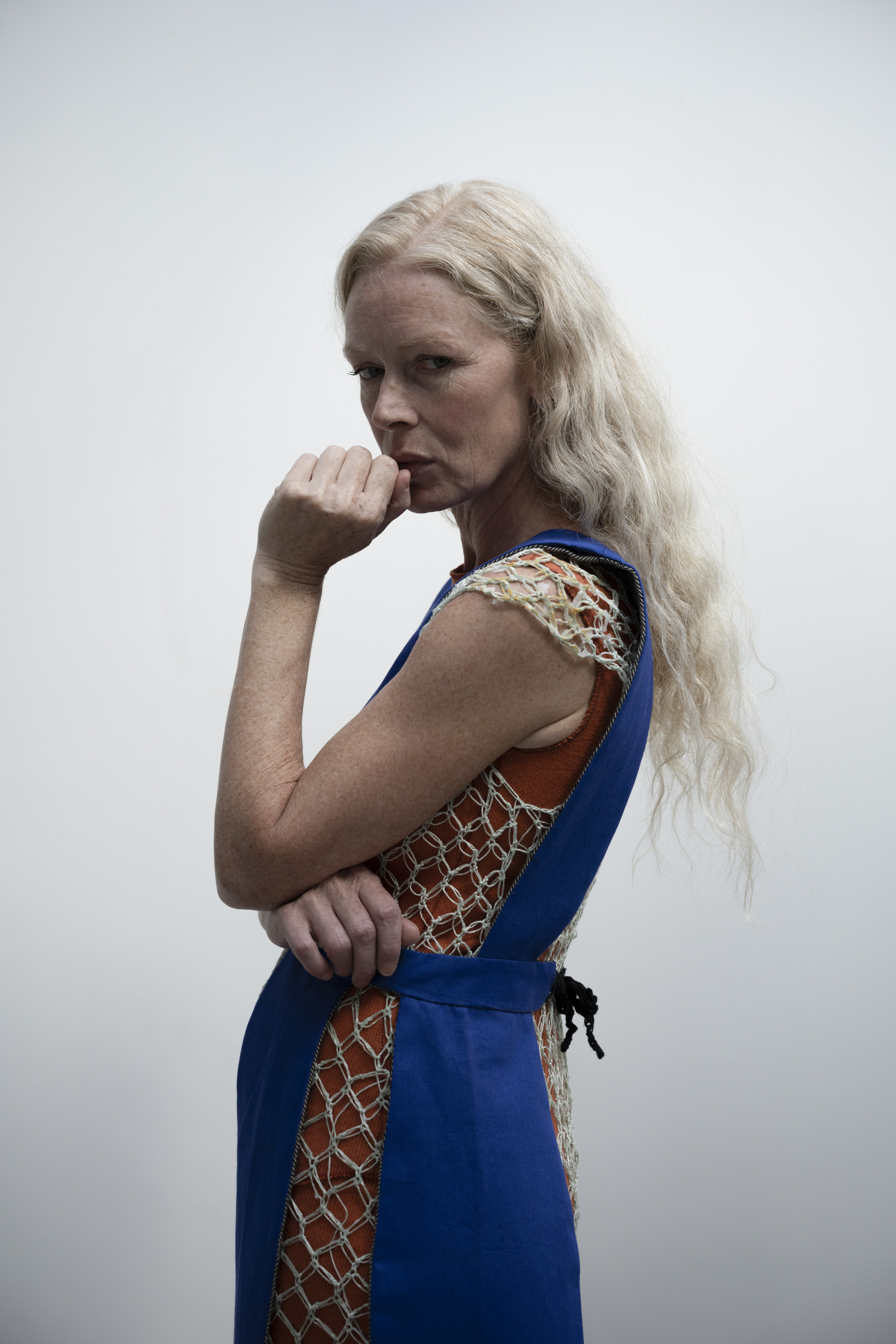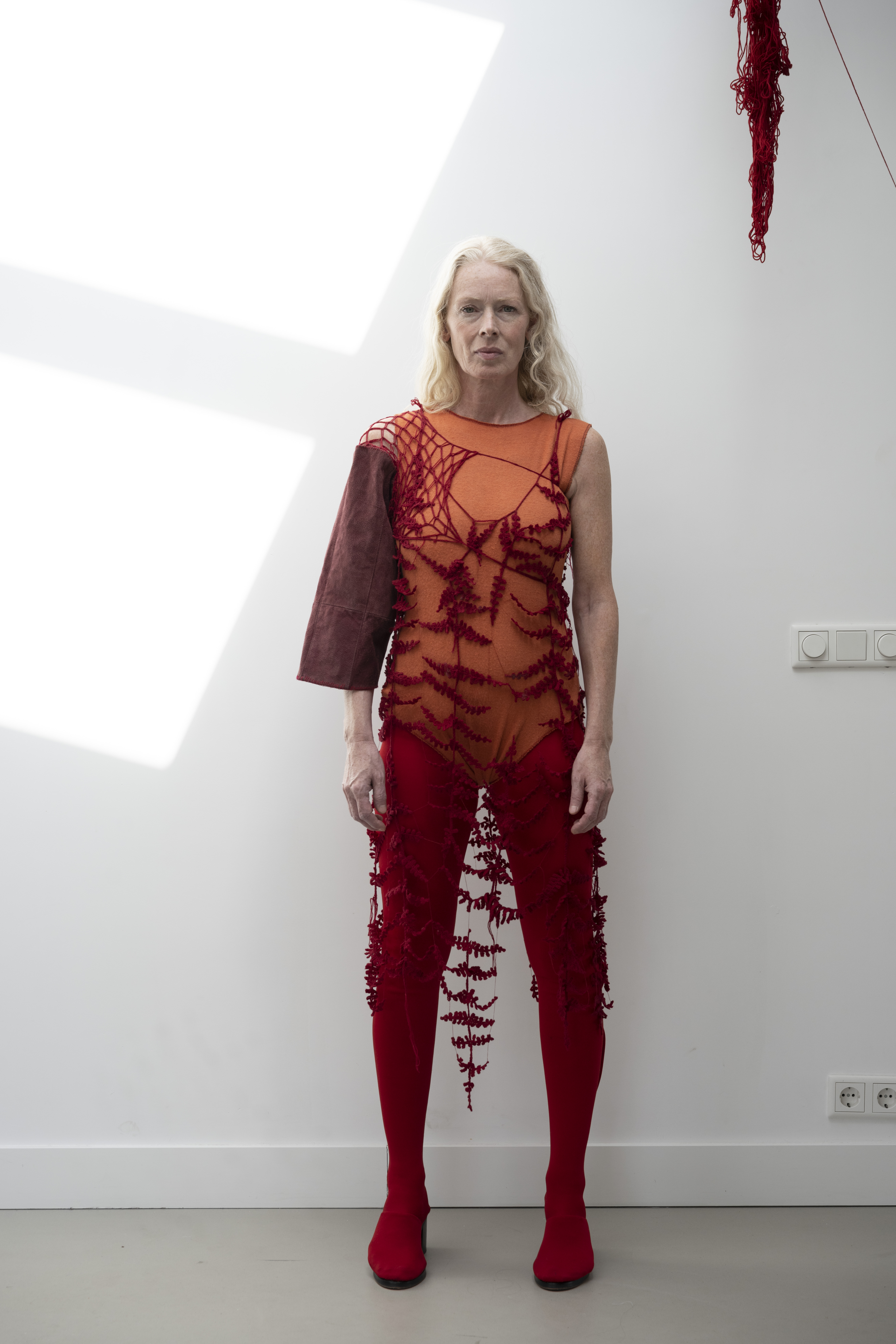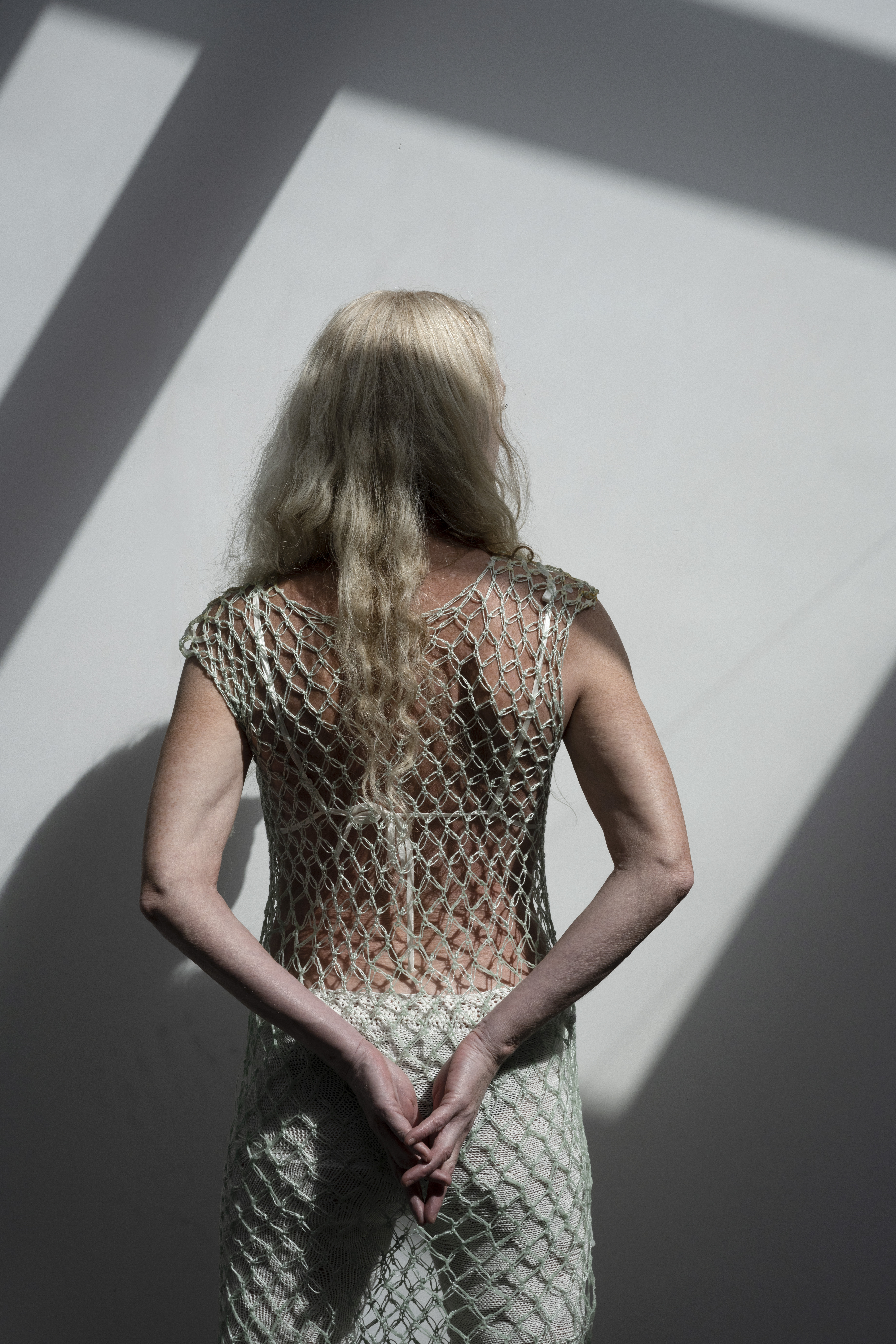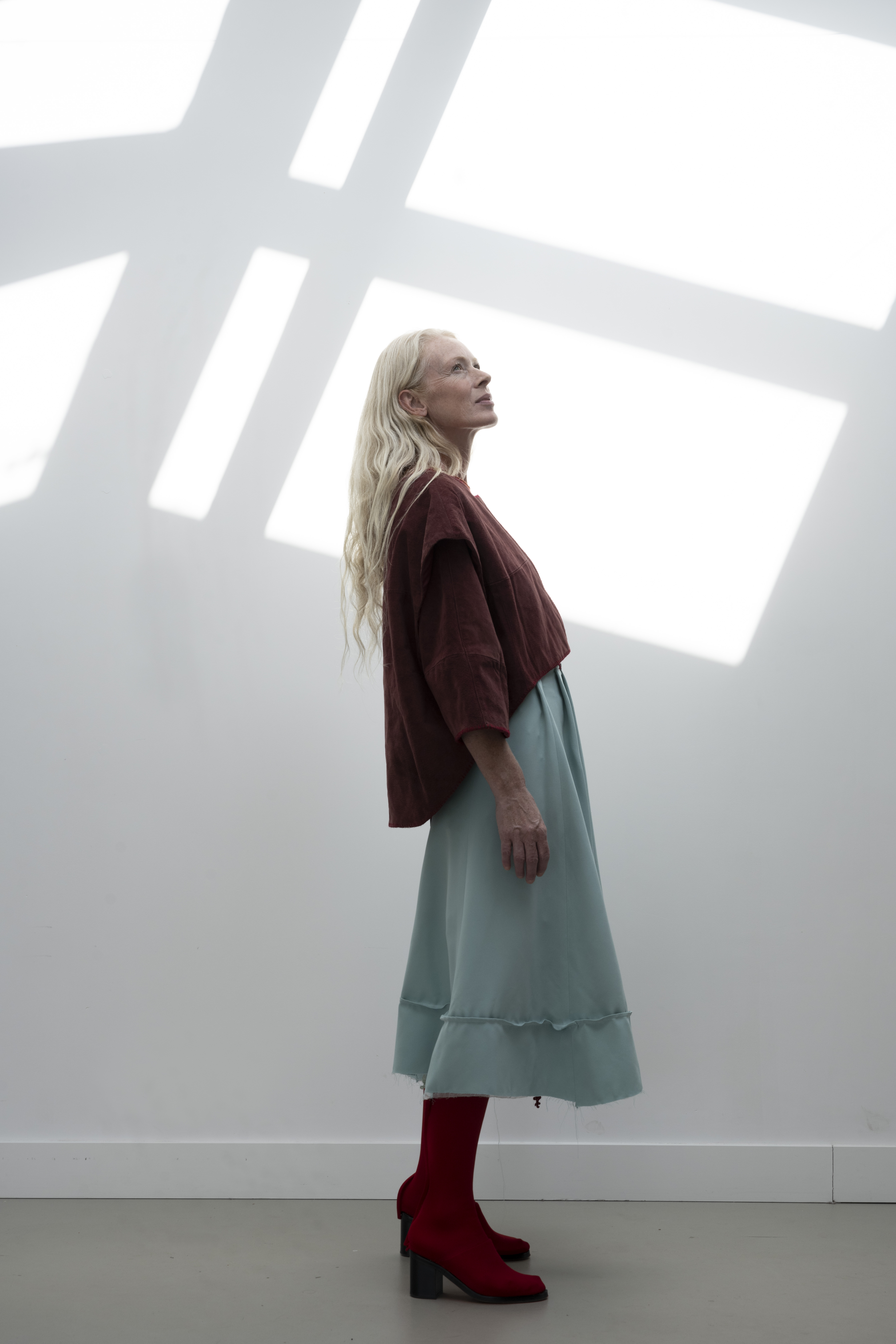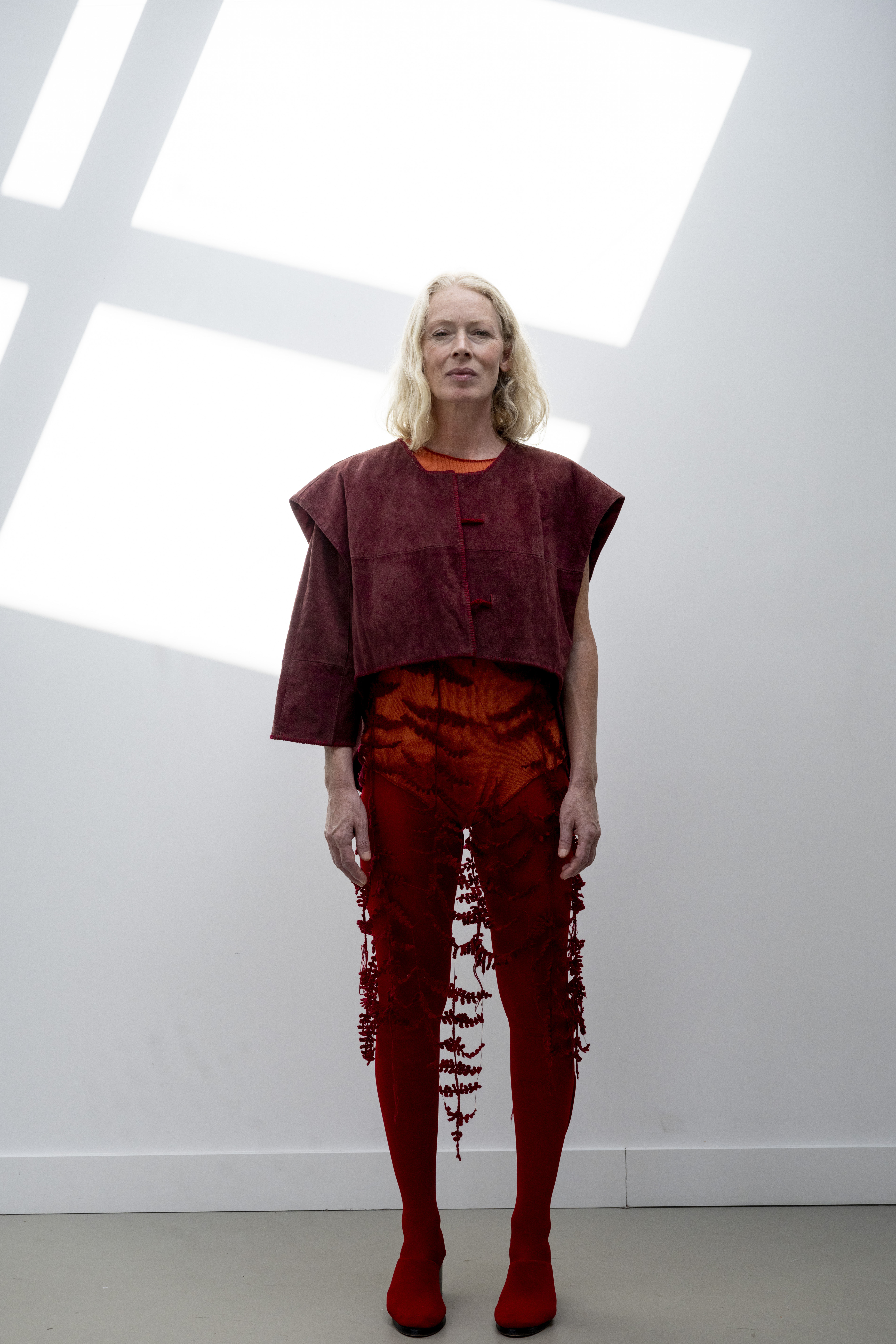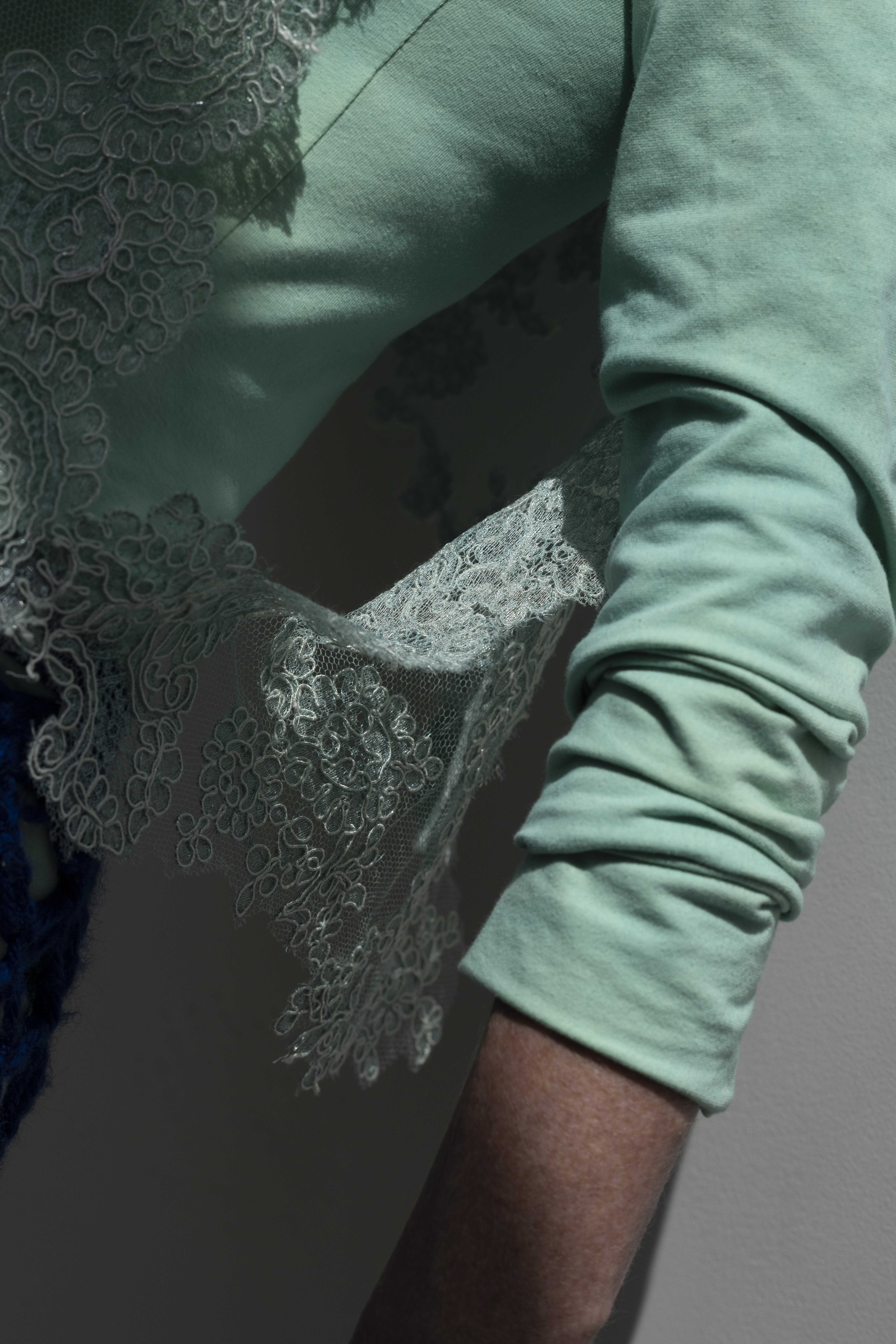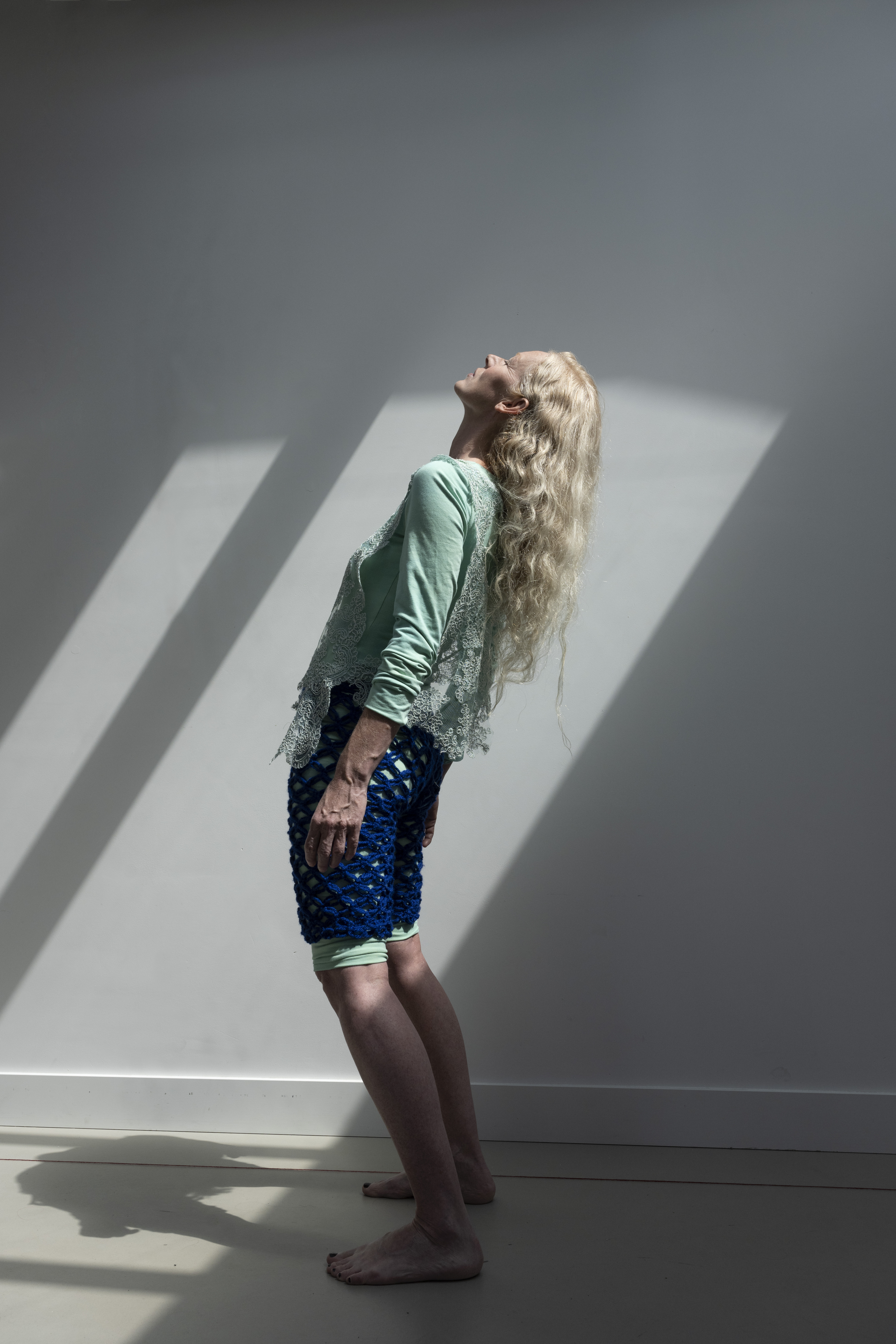In the Face of Loss
“In the Face of Loss”, 2019, was triggered by the story of a tablecloth that found its way into my hands.
It started with the encounter of a crafting woman [me] and an object [1950s hand-embroidered army-navy tablecloth]. It includes research, sculptural garments, text and photography by Bram Petraeus.
![]()
![]()
The tablecloth told a story about mortality, womanhood and crafting, that from a feminist perspective counters a more common story in which female makers' traditions and flower-symbolism are reduced to biological reproduction.
The cloth contains paradoxes between technology and symbolism, that made me aware of the potential for cultural reproduction through making.
Crafting is a ritual act aiming at something permanent in a world threatened by decay and death. The floral symbolism makes this paradox tangible. The woman as a sister is the material agent of cultural reproduction. She enables relation to space and time through her crafting and the objects she makes.
![]()
![]()
Crafting transforms the makers presence into an object, that becomes a repository of the makers presence. Such objects are contagious and spread their power and aura to things and people around it.
Possession creates difference, so does female crafting. The acknowledgement of female power through crafting proofs the ritual making as an empowering act. She is preserving and conserving what is inevitably dying.
![]()
![]()
The emancipated crocheted flower-patterns are fraying, decaying and waxed against this constant threat.
![]()
![]()
The knitted/clayed objects are embodying fragility and permanence. The composition of artworks show the paradoxes raised by the tablecloth's story and portrait the woman as a sister who is creating objects of permanence in a world threatened by death and decay.
The tablecloths story calls for a feminist movement in the arts and crafts. With its focus on aesthetic, sensual perception. About value and time, value through time
and power through crafting.
It started with the encounter of a crafting woman [me] and an object [1950s hand-embroidered army-navy tablecloth]. It includes research, sculptural garments, text and photography by Bram Petraeus.


The tablecloth told a story about mortality, womanhood and crafting, that from a feminist perspective counters a more common story in which female makers' traditions and flower-symbolism are reduced to biological reproduction.
The cloth contains paradoxes between technology and symbolism, that made me aware of the potential for cultural reproduction through making.
Crafting is a ritual act aiming at something permanent in a world threatened by decay and death. The floral symbolism makes this paradox tangible. The woman as a sister is the material agent of cultural reproduction. She enables relation to space and time through her crafting and the objects she makes.

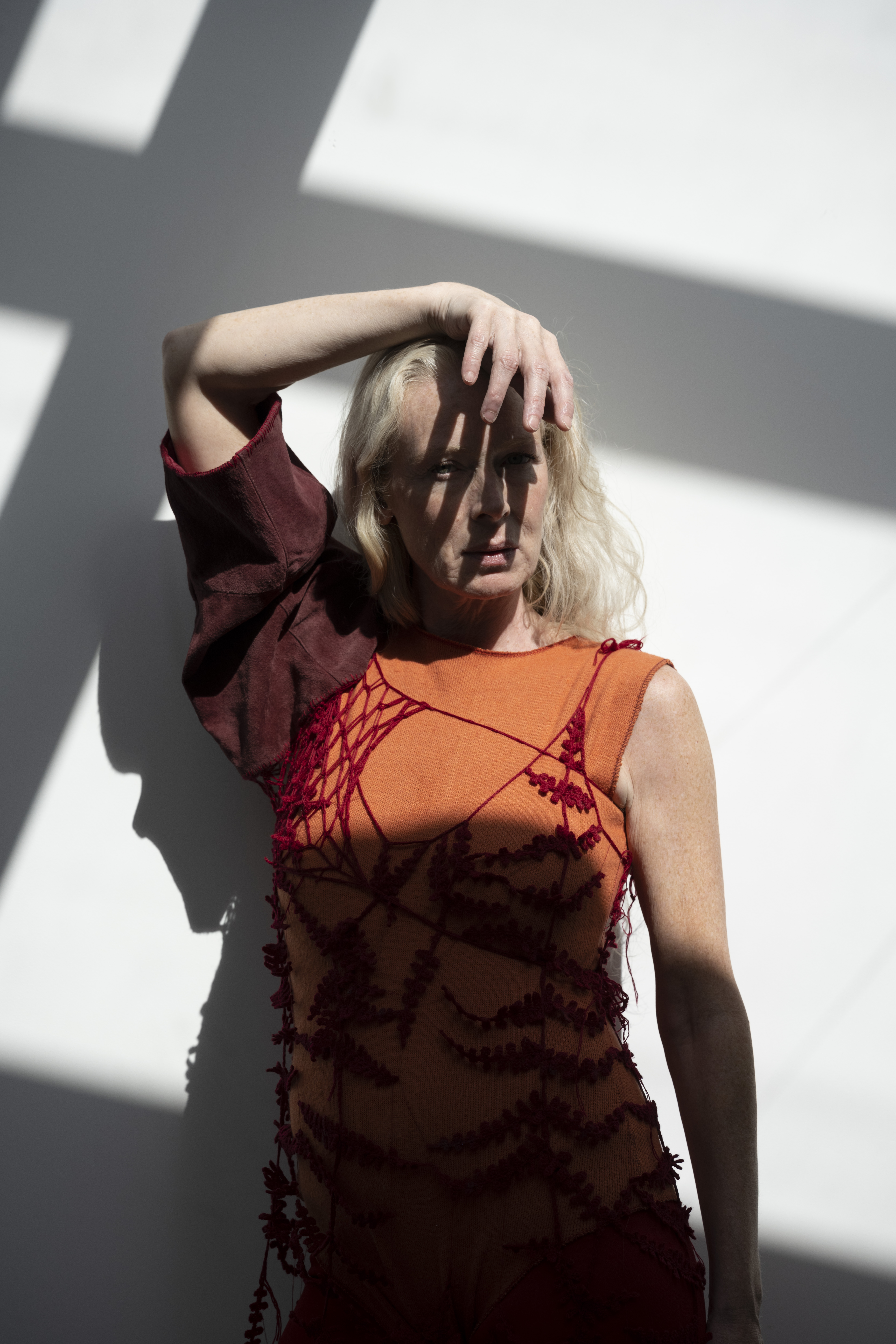
Crafting transforms the makers presence into an object, that becomes a repository of the makers presence. Such objects are contagious and spread their power and aura to things and people around it.
Possession creates difference, so does female crafting. The acknowledgement of female power through crafting proofs the ritual making as an empowering act. She is preserving and conserving what is inevitably dying.


The emancipated crocheted flower-patterns are fraying, decaying and waxed against this constant threat.

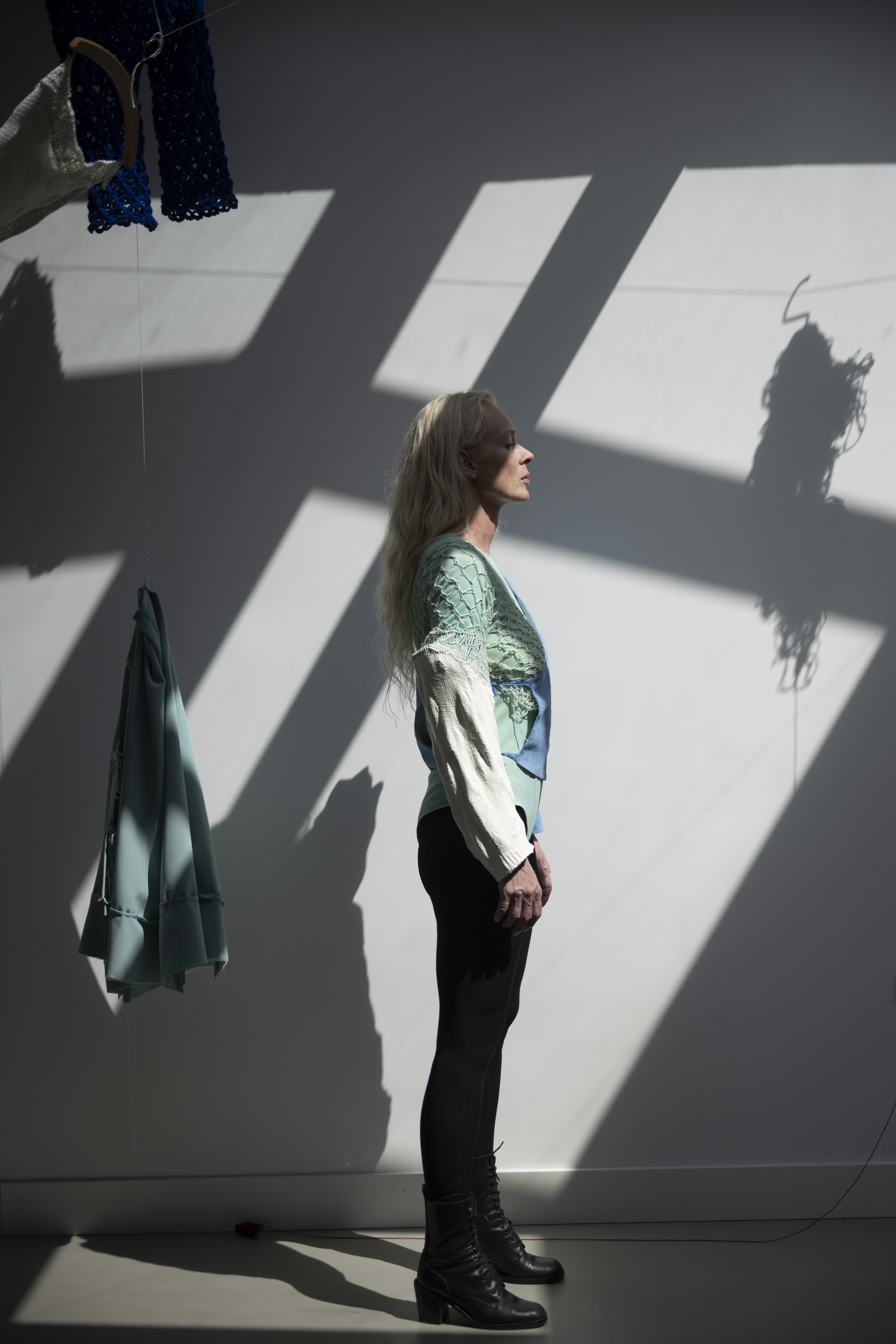
The knitted/clayed objects are embodying fragility and permanence. The composition of artworks show the paradoxes raised by the tablecloth's story and portrait the woman as a sister who is creating objects of permanence in a world threatened by death and decay.
The tablecloths story calls for a feminist movement in the arts and crafts. With its focus on aesthetic, sensual perception. About value and time, value through time
and power through crafting.
